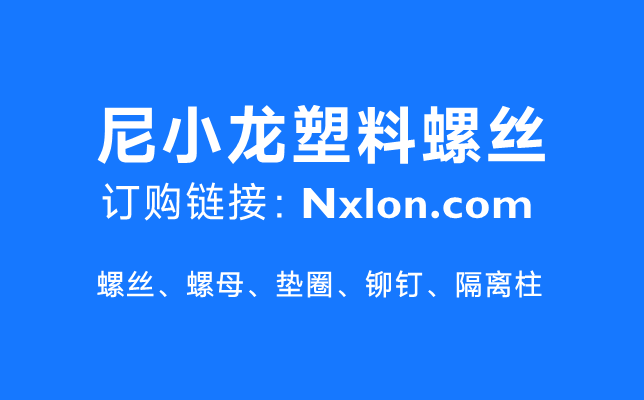120° Countersunk Head Semi-hollow Rivets
©Nxlon.com D/T:

Structural Features of 120° Countersunk Head Semi-hollow Rivets
Head Shape: The head is designed with a 120° countersunk head. Compared with ordinary countersunk head rivets, its angle is more special. It can form a specific fitting angle with the surface of the connected part, making the surface flatter and smoother after connection. It is suitable for occasions with high requirements for appearance and a certain load-bearing capacity.
Shank Structure: The shank is cylindrical, with a hollow part in the middle. Generally, it is solid from the head to the middle position, and the tail is hollow. This semi-hollow structure makes it easy for the hollow part of the rivet to expand and deform outward when being riveted under extrusion, which is convenient for filling the riveting hole, forming a firm connection, and can reduce the weight to a certain extent.
Material Selection of 120° Countersunk Head Semi-hollow Rivets
Similar to flat round head semi-hollow rivets, the commonly used materials usually include carbon steel, stainless steel, and aluminum alloy. Carbon steel has relatively high strength and hardness and a low cost, but it requires anti-corrosion treatment; stainless steel has excellent corrosion resistance and oxidation resistance and is suitable for industries with high requirements for hygiene and corrosion resistance, but its cost is high; aluminum alloy has a low density, is light in weight, and has a certain degree of corrosion resistance, and is often used in fields that are sensitive to weight.
Manufacturing Process of 120° Countersunk Head Semi-hollow Rivets
Cold Heading: The cold heading process is adopted to process the metal material into the approximate shape of the rivet. High pressure is applied to the metal blank at room temperature to make it undergo plastic deformation, forming the head and shank of the rivet, increasing the density and strength of the metal, and ensuring dimensional accuracy and surface quality.
Punching: Punching operation is carried out on the rivet blank after cold heading to form a semi-hollow structure. The diameter, depth, and position of the punching are strictly controlled to ensure that the rivet can expand evenly and fill the riveting hole well during riveting.
Surface Treatment: According to the usage environment and requirements, surface treatment is carried out on the rivet, such as galvanizing, nickel plating, chromium plating, Dacromet treatment, phosphating treatment, etc., to improve corrosion resistance, wear resistance, and aesthetic appearance.
Application Fields of 120° Countersunk Head Semi-hollow Rivets
Aerospace: It can be used for the connection of aircraft interior panels, the fixing of some lightweight structural components and other non-critical structural parts. By taking advantage of its characteristics of light weight and convenient connection, it helps to reduce the overall weight of the aircraft and improve its flight performance.
Automobile Manufacturing: It is often used for the connection of thin plate components of automobile bodies, such as doors, engine hoods, and trunk lids. Its countersunk head design can make the surface of the connected part flat and have a high aesthetic appearance. At the same time, the semi-hollow structure can reduce the weight of the body on the premise of ensuring the connection strength, improving fuel economy.
Mechanical Equipment Manufacturing: It can be used to connect various components made of different materials, such as the connection between metal and plastic, providing reliable connection strength and adapting to different working environments.
Electronic Equipment Manufacturing: It is often used for the connection of the casings and components of electronic products. It has good stability and electrical conductivity, ensuring the stability and safety of the equipment, and at the same time meeting the requirements of electronic equipment for a neat and beautiful appearance.
Marking Method of 120° Countersunk Head Semi-hollow Rivets
The marking usually includes information such as the product name, standard number, nominal diameter, nominal length, material, and surface treatment. For example, the marking "Rivet, 120° Countersunk Head Semi-hollow, GB/T 874 - 1986, 5×15 - 304 Stainless Steel, Nickel Plated" indicates a 120° countersunk head semi-hollow rivet with a nominal diameter of 5mm, a nominal length of 15mm, a material of 304 stainless steel, and a surface treatment of nickel plating.
Installation Precautions of 120° Countersunk Head Semi-hollow Rivets
Aperture and Hole Depth: The diameter of the installation hole on the connected part should match the nominal diameter of the rivet, generally slightly larger than the diameter of the shank of the rivet to facilitate the insertion of the rivet. The hole depth should be determined according to the length of the rivet and the thickness of the connected part to ensure that after riveting, the countersunk head of the rivet closely fits the surface of the connected part, and the hollow part of the shank can fully expand and fill the riveting hole.
Riveting Tools and Pressure: Select appropriate riveting tools according to the material and specifications of the rivet, such as pneumatic riveting machines, hydraulic riveting machines, or manual rivet guns. Accurately control the riveting pressure. If the pressure is too small, the rivet may not be closely combined with the connected part, affecting the connection strength; if the pressure is too large, it may cause excessive deformation of the rivet head, breakage of the shank, or damage to the connected part.
Verticality and Concentricity: When inserting the rivet into the installation hole, ensure that the axis of the rivet is perpendicular to the surface of the connected part and concentric with the installation hole, so that the rivet is evenly stressed during riveting, ensuring that the countersunk head fits flatly on the surface of the connected part, and the shank closely fits the hole wall, improving the stability and strength of the connection.
尼小龙塑料螺丝-塑料螺母-尼龙垫圈-塑料铆钉
尼小龙EHR塑料花瓣型护线套
订购链接:Nxlon.com/1050
塑料梅花型护线套EHR尼龙扣式线束圈花瓣形保护环卡电线出线孔塞材质:尼龙,颜色:黑色、白色;规格:EHR-16、EHR-19、EHR-21、EHR-22、EHR-25等。
LCF绝缘塑料双头卡式隔离柱
订购链接:Nxlon.com/1030
LCF绝缘塑料双头卡式隔离柱PCB线路板塑料铆钉支架支撑柱固定垫高柱双头卡扣式隔离柱LCF塑料间隔柱PCB线路板支架支撑柱固定垫高柱
内4.2外7.0黑色塑料直通柱隔离柱
订购链接:Nxlon.com/1015
内4.2外7.0塑料直通柱隔离柱是一种用于电子设备等领域的绝缘零部件,尼小龙现有直通柱M4系列内径=4.2mm;外径:M4系列外径都是7mm;高度:2到15mm
塑料R型线夹圆形线卡拱形压线板
订购链接:Nxlon.com/1053
塑料R型线夹圆形线卡拱形压线板,材质:PP塑料、尼龙等。紧固孔:M4。塑料R型线夹圆形线卡拱形压线板,材质:PP塑料、尼龙等。紧固孔:M4。
R2024-塑料铆钉-尼龙铆钉
订购链接:Nxlon.com/2024
R2024-塑料铆钉-尼龙铆钉塑料铆钉-尼龙铆钉-汽车塑胶铆钉-尼小龙尼龙铆钉R2.6R3.5R4R5塑胶柳钉子母铆钉快捷紧固件塑料卡扣。
R3550-塑料铆钉-尼龙铆钉
订购链接:Nxlon.com/3550
R3550-塑料铆钉-尼龙铆钉塑料铆钉-尼龙铆钉-汽车塑胶铆钉-尼小龙尼龙铆钉R2.6R3.5R4R5塑胶柳钉子母铆钉快捷紧固件塑料卡扣。
尼小龙塑料HP盲孔扣式塞头
订购链接:Nxlon.com/1052
尼龙HP扣式塞头堵孔塞封口盖塞子管堵头圆形闷头装饰盖塑料孔塞盖材质:尼龙,颜色:黑色、白色;规格:HP-16、HP-19、HP-22、HP-25等。
R4050-塑料铆钉-尼龙铆钉
订购链接:Nxlon.com/4050
R4050-塑料铆钉-尼龙铆钉塑料铆钉-尼龙铆钉-汽车塑胶铆钉-尼小龙尼龙铆钉R2.6R3.5R4R5塑胶柳钉子母铆钉快捷紧固件塑料卡扣。









